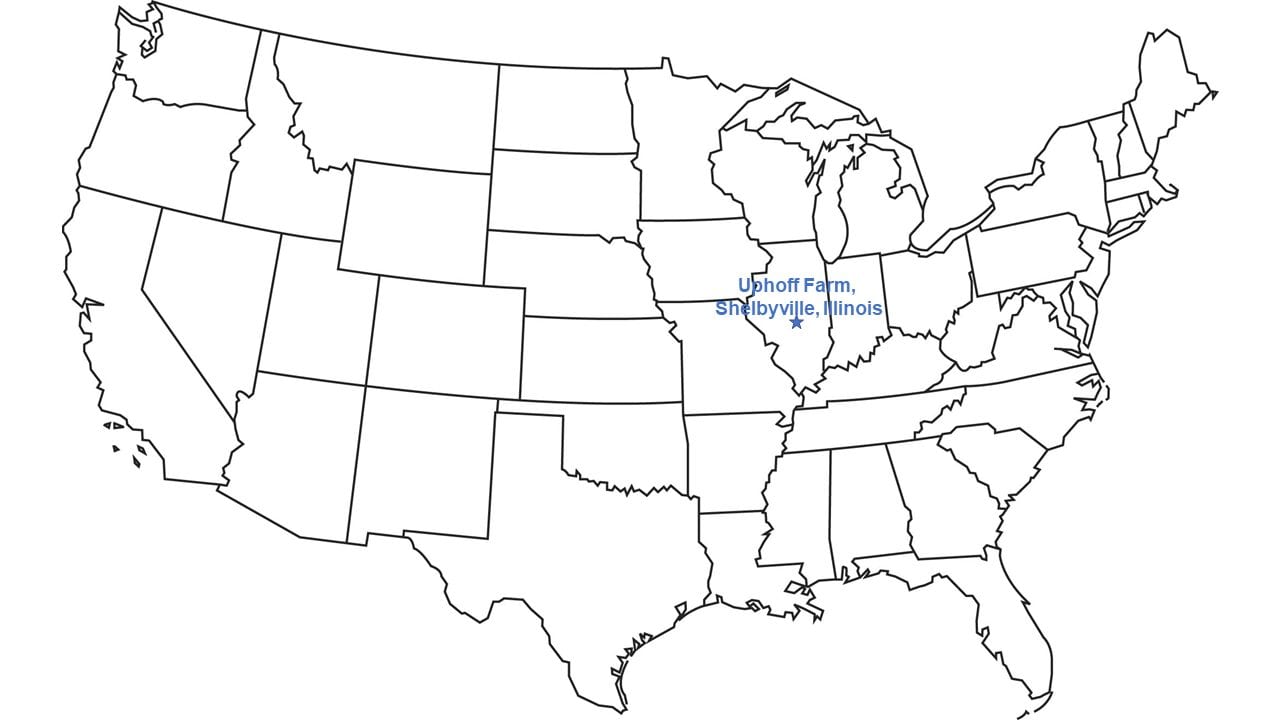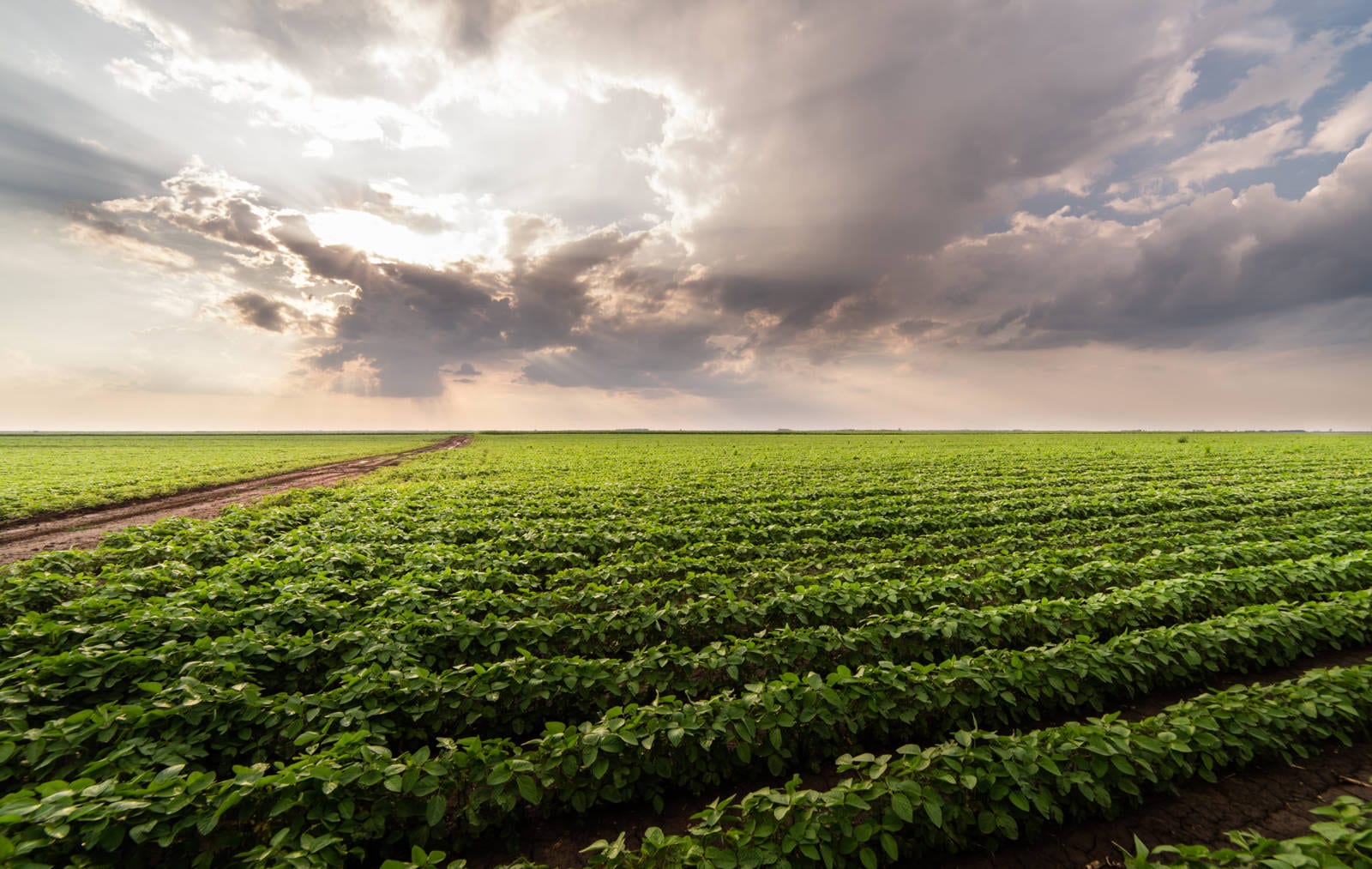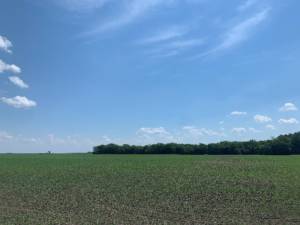 We finally are enjoying great field conditions and our crops are growing well. After a great early start to spring, rain delays slowed us down for over a month. But on May 30, we returned to planting soybeans and finished planting into warm, dry soils by June 3, with excellent emergence.
We finally are enjoying great field conditions and our crops are growing well. After a great early start to spring, rain delays slowed us down for over a month. But on May 30, we returned to planting soybeans and finished planting into warm, dry soils by June 3, with excellent emergence.
Our soybeans are now in great shape. We have lots of pretty soybean fields, with the best crop stands we’ve had in the past couple years.
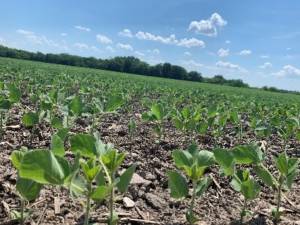 The soybeans planted in late May and early June emerged within a week of planting. When they are small, soybeans don’t like “wet feet,” or really wet soils, to establish strong root systems. The last couple years we’ve had very wet springs, but this year, we’ve had a dry June so far, so the young soybeans have been able to grow deep roots that will sustain them for the rest of the summer, whatever the weather brings.
The soybeans planted in late May and early June emerged within a week of planting. When they are small, soybeans don’t like “wet feet,” or really wet soils, to establish strong root systems. The last couple years we’ve had very wet springs, but this year, we’ve had a dry June so far, so the young soybeans have been able to grow deep roots that will sustain them for the rest of the summer, whatever the weather brings.
We hire our local cooperative, where we buy inputs like fertilizer and pesticides, to apply our herbicides because we don’t own spray equipment. They applied residual herbicide, which prevents weeds from growing, to our soybeans as we planted them, so the fields remain weed-free. We will apply another pass of residual herbicide right before the soybeans canopy, or grow enough that their leaves bush out to cover the space between the rows, to keep weeds from being a problem. We expect to be ready for that by early July.
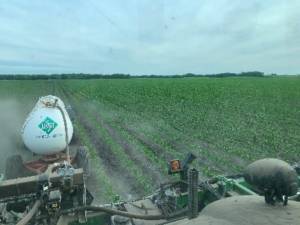
Once we finished planting soybeans, we turned our attention back to the corn that was planted before all the rain we had in May. We had to replant some areas of fields that had water damage. We also started over in a 12-hectare, or 30-acre, field that experienced significant water and turkey damage. Because the corn emerged so slowly during our cool, wet weather last month, a flock of nine or ten wild turkeys were able to eat on the emerging crop throughout the month. Normally they aren’t able to do much damage because the crop quickly grows beyond the point they like to eat it. We actually worked the soil again and replanted the whole field, and it emerged much more quickly this time.
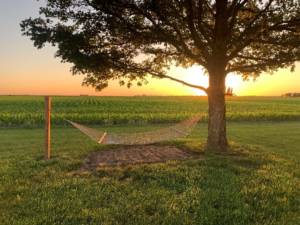
While we planted soybeans, our local cooperative sprayed our emerged cornfields with a post-emergence application of herbicide to control weeds. And after we finished planting soybeans, we focused on side-dressing our corn with nitrogen. We inject anhydrous ammonia, a pressurized form of nitrogen, into the soil with a bar of hollow knives that lines up with the rows on our planters. We typically do this when the corn is 8 to 10 cm, or 3 to 4 inches, tall. However, because of the weather conditions this year and the need to get soybeans planted, some of our corn got as tall as 30 to 45 cm, or 12 to 18 inches, tall before we applied that fertilizer. We prefer to do that when the corn is small because it can start accessing more nitrogen sooner, and because it can better recover if it is run over by equipment tires.
Now we are cleaning up equipment used this spring and appreciating the beautiful, warm growing weather we have right now. We are on track for really good crops this year.
